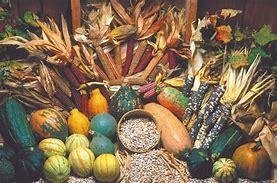Balance

Ten thousand years ago, when the ice covering New England began to recede, the people we know as the Massachusett were in the area that is now Boston. As the earth warmed and the ice melted and retreated, leaving behind mounds of debris brought down from the north when the ice sheets spread southward. As the ice melted, the lower areas filled with the melted ice and became Boston Harbor and Massachusetts Bay. The mounds (which we call drumlins) became islands and the mounds on the higher ground became hills that took such names as Breeds and Bunker Hills and Dorchester Heights.
As the ice receded and he climate moderated, the Massachusett and other indigenous people in the area learned to live with and in the environment. They built weirs to trap the abundant creatures living in the harbor and rivers and constructed canoes (Mishoons) to ply the waters of the harbor where they would build camps on the harbor islands for the summer. Besides fishing, they gathered the numerous berries and wild plants that they learned by trial and error to be nutritious and help heal various ailments and finally they learned to grow crops – a very specialized trio of crops: the three sisters: corn, beans, and squash. The origins of these crops evolved from wild plants in Mexico all the way to the developed trio of a perfectly balanced food source. The three crops complement each other, producing nutrients to provide optimum growth.

The Three Sisters: corn, beans, and squash

Fish Weir
When Europeans began to arrive in the late 16th Century, their tradition of land use was directly from the Christian Bible of dominance over the land. They fished the waters taking much more than they needed and sold the surplus to the plantations in the Caribbean to feed the enslaved people harvesting the sugar cane and using the molasses to make rum which was used to buy more enslaved people. The tradition of mono crops began from the sugar cane to tobacco and then cotton as the Europeans spread south. Spreading south and then west as the mono crops leached the nutrients from the soil until 500 years later hundreds of millions of people rely on their food which is grown in a desert with less and less water to sustain this effort.
As our sources of food are more and more dependent on mono crops and factory farms, a grass roots movement designed to bring balance to our food sources and sustain our planet – our Mother Earth. Over the last 10 years, we’ve seen the proliferation of farmers markets which are beginning to become a popular alternative to the regular supermarkets, but only for those who can afford them. Farmers markets are the forward-facing element in a movement for food sustainability. More and more cities are creating community gardens in which residents living in so-called “food deserts” can have a place in their neighborhood to grow their own food. The wisdom cultivated by indigenous people over thousands of years is being recognized as a solution to healing and bring back balance to the natural world.
The move toward diversified food sourcing through smaller farms and community agriculture is serendipitous for our original indigenous stewards. Over the 500 years from first contact between Europeans and native peoples, literally millions of indigenous people died from disease and war and their traditional lands were taken from them, mainly through deceptive means. Many who fought back were corralled into much small areas of land that was generally the least desirable to the dominant culture. Through forced schooling at boarding schools, languages and culture was lost to the point that many believed that no indigenous people survived, especially on the East Coast. Nothing could be farther from the truth.
Organizations such as the National Park Service now acknowledge that many government policies over the years have been flawed – such as the killing of apex predators to encourage the increase in other species and the protection of forests to the point of allowing undergrowth to increase and provide a fuel source for wildfires, making them much more devastating. In recent years, some public lands have been placed under the stewardship of the local tribes and the results are a healthier ecosystem, becoming more balanced.
Reservations also disrupted traditional food sources with tribal members becoming dependent upon the government to provide non-traditional and most often non-nutritious food choices. Larger tribes such as the Navajo have epidemic cases of obesity and diabetes as they have forgotten or don’t have access to traditional food sources. The Dine’ Native Plants Program (https://wwwnndfw.org) is part of the Navajo Nation’s Department of Fish and Wildlife to provide the Dine’ with access to locally sourced high-quality plants for the benefit of the community, culture, wildlife and land. This idea is spreading to other tribes, such as the Association of American Indian Farmers (https://www.nativeamericanfarmes.org and
The Traditional Native American Farmers Association (http://www.tnafa.org) are two of many organizations supporting indigenous farmers .
A natural outgrowth of the native food production is Indigenous Cuisine including Sly Fox Den Museum and Oyster Farm in Connecticut and Rhode Island and Award winning Owamni in Minneapolis as well as dozens more in Canada, the Southwest and Mexico. We are coming full circle. When the Pilgrims arrived in what is now SE Massachusetts in 1620, they were literally starving and stole stored corn they found buried for winter storage by the local tribe. The Wampanoags fed the Pilgrims and showed them how to plant the three sisters to sustain them. Many of these food traditions survive in such popular dishes as succotash and now native chefs are rediscovering their heritages thru fine cuisine. As we enjoy these foods, perhaps we should acknowledge the gifts of Mother Earth and the balance that sustainable agricultural and aqua-cultural gives us.

References:
Agriculture and the West. Ann McNulty. January 21, 2023: Native agriculture never went away. Now it is on the rise. – & the West (stanford.edu)
Indigenous Agriculture and Sustainable Food – Sustainable Food Center
The Three Sisters of Indigenous American Agriculture | National Agricultural Library (usda.gov)
https://indigenousaquaculture.org/about-us